As the Lunar New Year in Vietnam approaches, the vibrant streets of Vietnam come alive with the spirit of Tet, a celebration that marks the beginning of the Vietnamese lunar calendar. Tet, short for Tet Nguyen Dan, is the most significant and cherished festival in Vietnam, bringing families together to honor ancestors, welcome prosperity, and bid farewell to the past year. For travelers seeking an authentic cultural experience, Tet offers a unique opportunity to witness traditions, indulge in festive delicacies, and be a part of the joyous celebrations. In this traveler's guide, Viet Cruise Tours will explore the essence of Tet and share tips on how to make the most of this extraordinary holiday.

Tết, short for Tết Nguyên Đán, is the Vietnamese term for the Lunar New Year, which is the most significant and widely celebrated festival in Vietnam. It marks the arrival of spring based on the lunar calendar and typically falls in late January or early February. Tết is a time for family reunions, honoring ancestors, and bidding farewell to the past year while welcoming new beginnings.
The festivities are characterized by various customs and traditions, including family gatherings, elaborate meals, the decoration of homes with vibrant flowers, and the giving of red envelopes containing "lucky money" for good fortune. Tết is a time of joy, gratitude, and renewal, with many people taking part in cultural events, parades, and traditional performances. The holiday lasts for about a week, during which businesses may close, and people travel to be with their families.
Tết, the Lunar New Year in Vietnam, is a joyous occasion steeped in tradition and cultural significance. Families come together for festive reunions, homes are adorned with vibrant decorations, and special foods are prepared to usher in the new year with auspicious beginnings. From the exchange of lucky money to the spectacular display of fireworks, Tết is a time of warmth, reflection, and shared cultural festivities that embody the spirit of renewal and hope for the future.
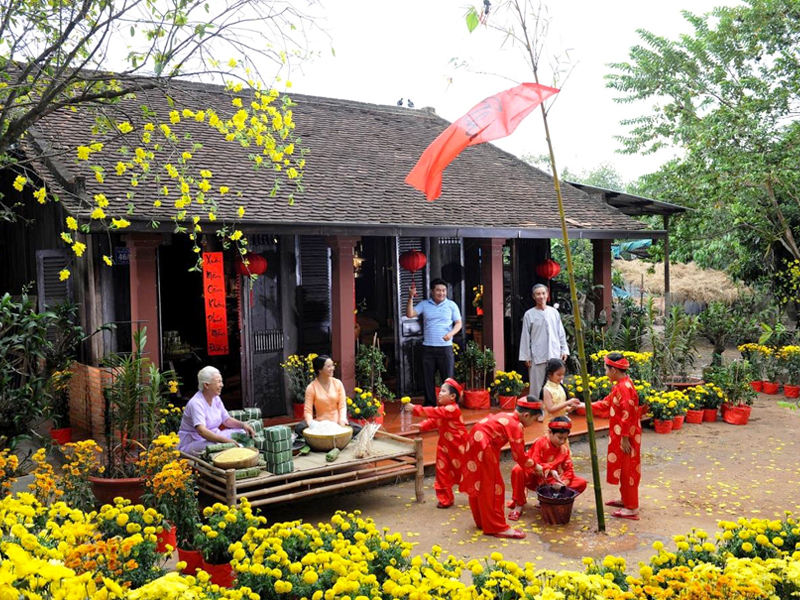
Family reunions are the heartbeat of Tết celebrations in Vietnam. As the Lunar New Year approaches, families embark on journeys, often spanning great distances, to gather under one roof. This cherished tradition symbolizes unity, love, and the importance of familial bonds during this special time.
The reunions are marked by heartfelt moments, shared laughter, and the joy of being together after a year's worth of experiences. The festive meals, adorned homes, and the exchange of warm wishes during these gatherings create a tapestry of memories, reinforcing the significance of family in the vibrant celebration of Tết.
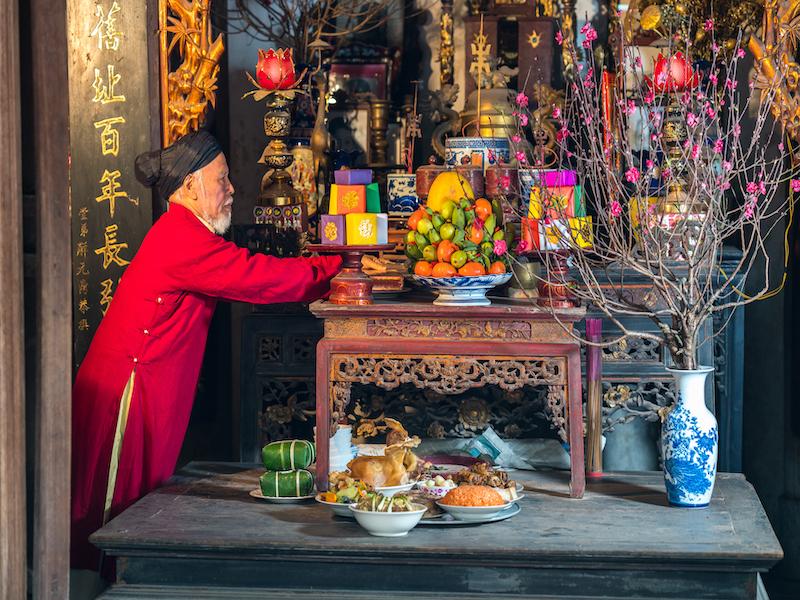
Home decorations play a pivotal role in the vibrant celebration of Lunar New Year in Vietnam. As the Lunar New Year approaches, homes are transformed into lively and colorful spaces. The meticulous cleaning of homes signifies the removal of negativity and the welcoming of positive energy for the upcoming year. Vibrant flowers, such as peach blossoms and kumquat trees, are carefully arranged, symbolizing prosperity and new beginnings.
The atmosphere becomes infused with the spirit of renewal as families prepare their homes to receive guests and celebrate the joyous occasion. These festive decorations not only create a visually stunning environment but also carry deep cultural significance, reinforcing the belief in good fortune, prosperity, and the promise of a fresh start in the coming year.
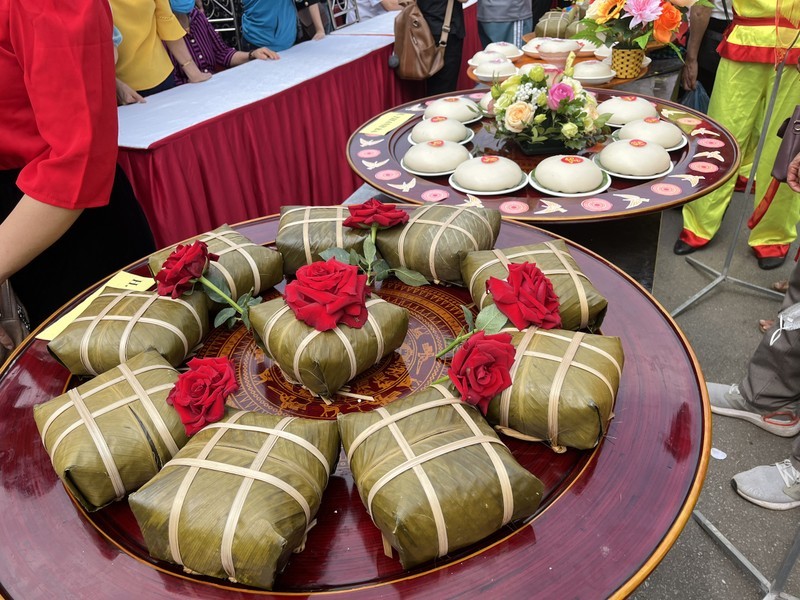
Tết, the Lunar New Year in Vietnam, is synonymous with a delightful array of special foods that hold deep cultural significance. Among the traditional dishes, "bánh chưng" takes center stage—a square-shaped sticky rice cake wrapped in banana leaves, symbolizing the Earth and the quintessence of Vietnamese agricultural life.
Families meticulously prepare and share this special dish, emphasizing unity and the essence of ancestral traditions. Additionally, tables are adorned with a variety of treats, including pickled vegetables, candied fruits, and an assortment of savory and sweet delicacies.
These special foods are not only a feast for the palate but also carry profound meanings, representing prosperity, luck, and the hope for a bountiful year ahead. Tết becomes a time for indulgence, as loved ones gather to savor these culinary delights, creating cherished moments and forging connections around the dining table.
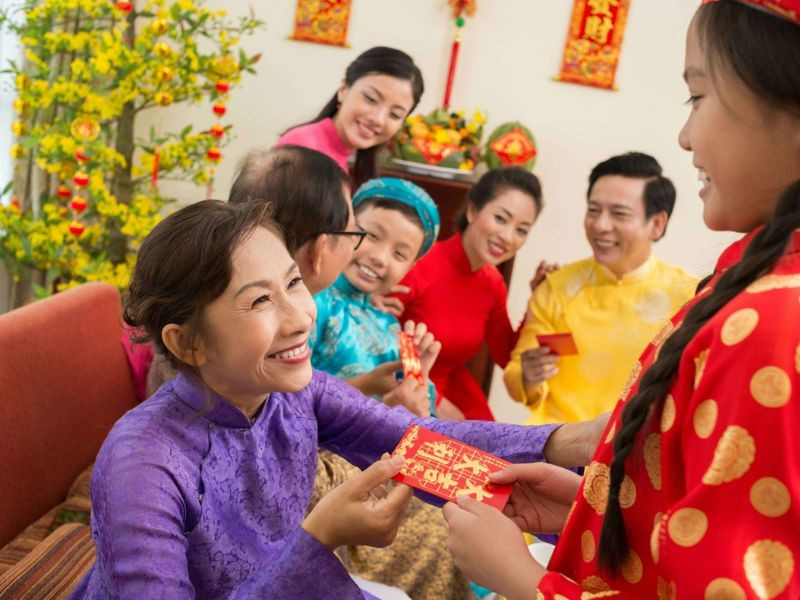
The custom of giving and receiving "Lucky Money" during Tết adds a heartwarming touch to the celebrations in Vietnam. Elders, parents, and married individuals present red envelopes, known as "li xi," containing money to younger family members, friends, or those in their care.
These red envelopes symbolize good wishes, blessings, and the sharing of prosperity for the coming year. The color red is considered auspicious in Vietnamese culture, believed to ward off evil spirits and bring good luck.
The exchange of Lucky Money not only brings joy to the recipients but also emphasizes the cultural values of respect and filial piety. It's a tradition on blessings and positive energy to the next generation, contributing to the overall spirit of hope and goodwill during Tết.
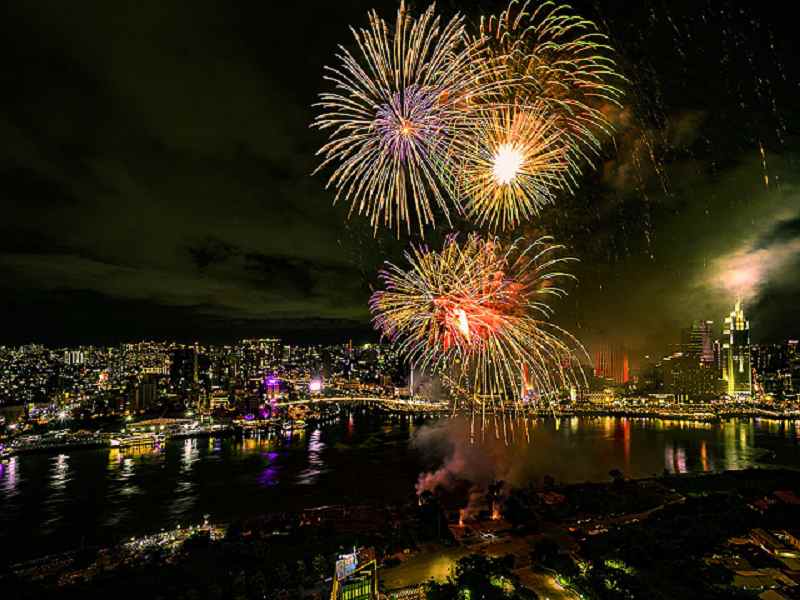
Tết, the Lunar New Year in Vietnam, is illuminated by the breathtaking display of fireworks and enriched by a myriad of cultural events. As the clock strikes midnight, vibrant bursts of color fill the night sky, symbolizing the dispelling of negativity and the ushering in of good fortune for the coming year.
Cultural events during Tết include parades, traditional performances, and communal gatherings. Streets come alive with the rhythmic beats of drums and the enchanting melodies of traditional music, creating an atmosphere of joy and festivity. These events serve as a cultural tapestry, weaving together the rich heritage of Vietnam and offering locals and visitors alike a glimpse into the nation's traditions and customs.
Fireworks and cultural events during Tết not only celebrate the beginning of a new lunar cycle but also foster a sense of community, shared identity, and cultural pride among the people of Vietnam.
Traveling during the New Year festival (Tết) in Vietnam is a unique and vibrant experience, but it comes with some considerations. Here are some essential things to know to make your journey enjoyable and culturally enriching.

Tết is the most significant holiday in Vietnam, leading to increased travel activity. Plan and book accommodations, transportation, and tours well in advance to secure your preferences.
Public transportation can be crowded, and private transportation options may be in high demand. Expect delays, especially around major cities and popular tourist destinations.
Many businesses, including restaurants, shops, and banks, may close during Tết. Plan accordingly and have enough cash on hand for transactions, as ATMs might have limited availability.
Be open to participating in the tradition of giving and receiving lucky money (li xi). If you're a guest in someone's home during Lunar New Year in Vietnam, it's customary to offer a small gift or show appreciation for their hospitality.
Vietnam's weather during Tết can vary by region. Check the climate of the specific areas you plan to visit and pack accordingly, including layers and comfortable walking shoes.
Embrace the festive atmosphere by exploring Tết markets. These markets offer a glimpse into local traditions, with vibrant decorations, traditional foods, and cultural performances. Attend fireworks displays and parades for a true Tết experience.
*Address:
- 2 Paris Commune, Ben Nghe, District 1
- 241 Pham Ngu Lao St, Pham Ngu Lao Ward, District 1
*Website: https://vietcruisetours.com/
*Hotline/Whatsapp: +84 908.785.680
*Email: contact@vietcruisetours.com
Newer articles
Older articles